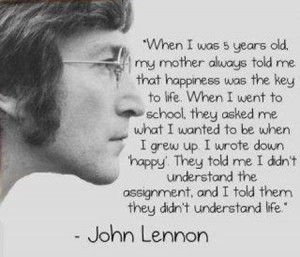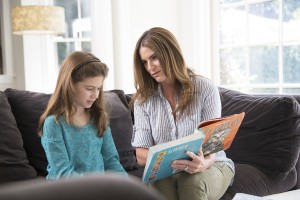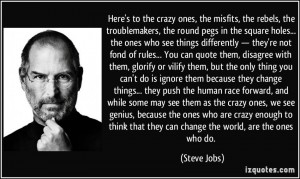wice-exceptional (2e) is a term used to describe a child who has high intelligence but struggles to learn in school. In the case of a bright dyslexic child, the child may appear average, in spite of significant dyslexia and gifted thinking ability. The gifts mask the disability and vice versa. Einstein, Edison, daVinci, Spielberg, John Lennon, Mark Twain, Hemingway, Richard Branson, Churchill, Walt Disney, Whoopi Goldberg, Steve Jobs

and many other well-known individuals are in their ranks, and a look at their school experiences often reveals childhood pain despite their later successes. Dyslexia is referred to as an “invisible disability.” Truly, neither giftedness or dyslexia can actually visibly be seen, aside from diagnostic profiles specifically designed to identify each difference, and characteristics lists. Spotting them together is far more difficult, and few professionals can. As a result, they often don’t qualify for specialized instruction, and don’t qualify for gifted programs because they can’t keep up with the written work. Someone Else’s Problem In his satirical sci-fi book, Life, the Universe and Everything, Douglas Adams describes an SEP field:
“A SEP… is something that we can’t see, or don’t see, or our brain doesn’t let us see, because we think that it’s somebody else’s problem. That’s what S.E.P. means. Somebody Else’s Problem. The brain just edits it out; it’s like a blind spot. If you look at it directly you won’t see it unless you know precisely what it is. Your only hope is to catch it by surprise out of the corner of your eye.”
Someone else’s problem field (SEP) makes people think that the subject cloaked in the field is someone else’s problem and need not be worried about. Problems one may have understanding it, and accepting its existence, become somebody else’s. The subject is not so much invisible as unnoticed. (Adams, p. 28, 36-37) School staff and policy decision-makers often lump giftedness in with high achievement and dyslexia in with special education, but what happens when the two combine making neither school-based program effective? In most cases, the 2e dyslexic becomes cloaked in Adams’ SEP field, and both needs are unnoticed and someone else’s problem — usually the parents’ and the child’s who suffer silently.
Stealth Dyslexia
Drs. Fernette and Brock Eide saw this co-occurrence — of gifted strengths and characteristics combined with dyslexia — so often in their practice they coined the term “Stealth Dyslexia,” and subsequently wrote articles and produced slide-share presentations describing how the two differences appear together. I actually prefer the Eides’ term, as dyslexia is unique among learning differences and twice-exceptionality. The need for specialized phonological processing instructional interventions makes identification critical. Yet, their intelligence masks their disability and their language processing deficits mask their intelligence, so often both are missed.
Diagnosis isn’t easy.
So, how can one see what is invisible or stealth? How do you “catch it by surprise out of the corner of your eye?” It very nearly takes one to know one, working intimately with these children for a number of years, or an expert who has expertise in both invisible brain-based differences. This is why dyslexia experts with knowledge of gifted characteristics are often the only ones who understand these children well. The stealth dyslexic learns quickly, but differently, so responds rapidly to dyslexia-specific instructional interventions too often denied. They have strong nonverbal skills, such as fluid reasoning and nonverbal problem solving, but language-based weaknesses that require them to be taught to be little linguists, per Dr. Linda Lombardino. They are big picture thinkers, whole-to-part learners, innovators and creative problem-solvers, and often referred to as out-of-the-box thinkers. Poor spelling and significant struggles with written expression are common. Their verbal vocabulary typically exceeds their written vocabulary.
Characteristics
A glimpse of the stealth dyslexic can be seen in Dr. Linda Silverman’s Upside-down Brilliance Visual-Spatial Learner. Their “mind strengths” are described in the Eides’ Dyslexic Advantage book. Both dyslexia strengths and weaknesses are listed in Yale Center for Dyslexia & Creativity’s signs of dyslexia. A list of gifted characteristics can be viewed on Mensa’s Characteristics of Giftedness, though the gifted characteristics vary somewhat for the 2e dyslexics. Montgomery County Maryland has a twice-exceptional guide and resource page, that lists characteristics of 2e, but it is not specific to dyslexia so includes traits of other differences. A cross-section of these lists will create a pretty clear picture, but the International Dyslexia Association also provides a twice-exceptional fact sheet. The descriptions I view as most accurate of the stealth dyslexic are by the originators of the term, and can be found in 2e Newsletter’s Stealth Dyslexia article by the Eides, their presentation on Dyslexia and Writing Challenges in Gifted Children, and also referenced in Summit Center’s Flying Under the Radar powerpoint.
Sadly, these children are too often spotted by the results of not meeting their needs proactively, when they hit the wall, and so develop compensatory strategies and cover-ups that are often counterproductive. They are bored with low-level content, yet can’t keep up with some easy tasks, and often try to mask their disability, but the frustration surfaces. This is when insult is added to injury, teachers interpret what they see as behavioral choice, and the child is mislabeled — “lazy, unmotivated, underachieving, inattentive, in his own world, daydreamer, argumentative, stubborn, complains, whines about assignments, makes careless mistakes, has messy handwriting, lacks organization, needs to try harder, prefers to work alone, needs prompting to finish written classwork, non-preferred task, aversion to school work” and other pejorative terms are written in report card comments, when the child is trying so hard to swim against the tide. The child internalizes these negative messages. Harvey Hubbell describes this in his movie, Dislecksia.
Diagnostic Tests
Preferably, the stealth dyslexic child will be seen proactively in diagnostic data performed by an expert in the combination. Often a stealth dyslexic will score in the gifted range or the top 2% on composite IQ scores early in elementary school, with excellent verbal vocabulary. In late elementary, the impact of reduced reading experience limits vocabulary acquisition, and the lack of early interventions restricts development of language and math fact automaticity, so begins to diminish these composite scores. Fluid reasoning and nonverbal problem-solving areas will likely remain in the gifted range. Nonverbal IQ tests may continue to reveal gifted strengths, but few schools use them. Scatter of scores is a good indicator on the WISC-V. WJ-III may show mostly average scores. Dyslexia specific tests will likely uncover some phonological processing deficits, multi-syllabic decoding struggles, spelling difficulties and depressed scores in written expression. It is not uncommon for these children to have some mild articulation difficulties. Various tests used in the identification of intelligence and dyslexia can be found here. Often stealth dyslexics are hidden in the average range on school-based assessments or achievement tests. 40 plus years of dyslexia research and 30 plus years of gifted education research, and the child who lives in-between the two is still hidden behind a someone else’s problem field in school. The importance of recognizing the stealth dyslexic is for the well-being of the individual child, but can be appreciated in iPads and iPhones, Disney, a daVinci work of art, a Spielberg movie, listening to a Beatle’s song, and even when the lights are turned on.

